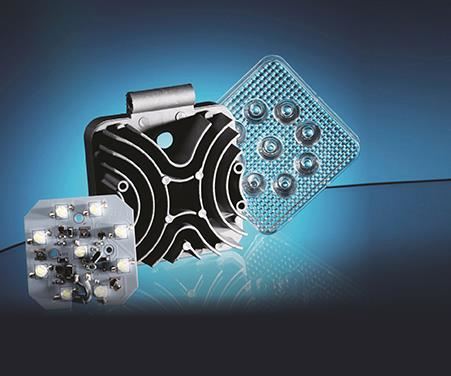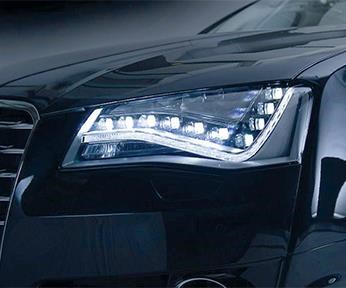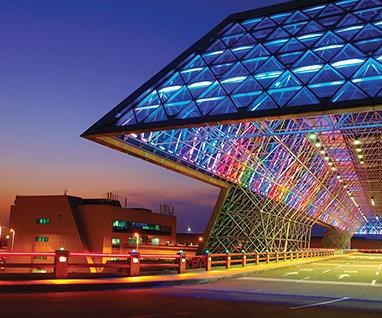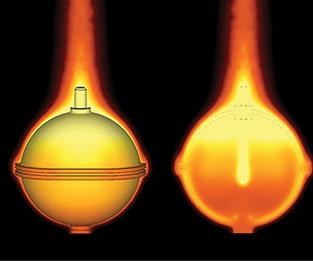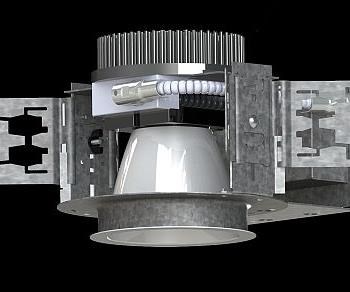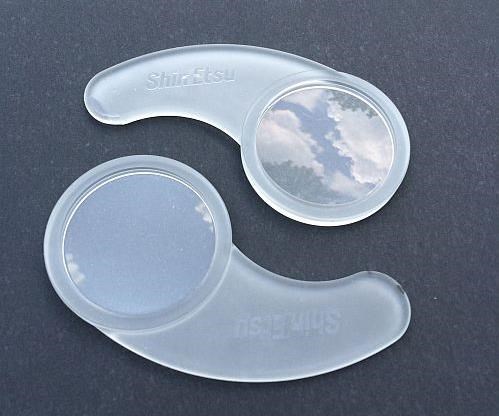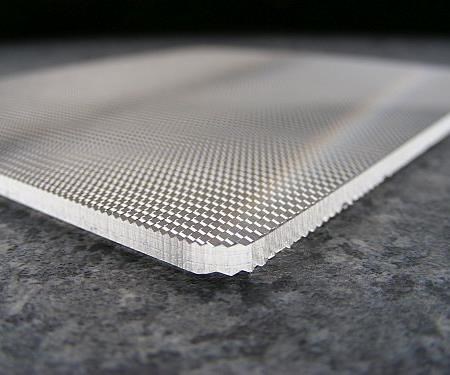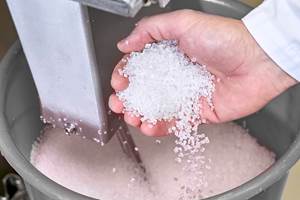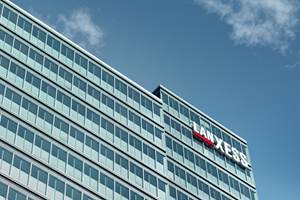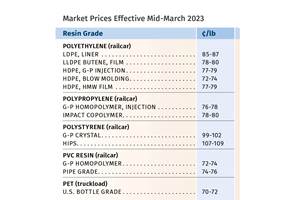New Materials Shine Bright In Growing LED Market
Rapid expansion of LED technology has spurred development of new formulations for a wide range of lighting components. Here are examples of activity in this fast-moving field.
Lighting manufacturers and designers are moving away from traditional lighting in favor of light-emitting diode technology because LEDs are more energy efficient, have a longer service life, and are environmentally sound. This has spurred significant development among material suppliers for new formulations aimed at interior and exterior illumination; automotive and transportation lighting; backlighting for TVs, computers, and smart phones; and signs and billboards. All that means more options and new opportunities for processors, primarily injection molders and sheet extruders, with a stake in this burgeoning market.
Among the new resins from which processors can choose are transparent, light-diffusion, ignition-resistant, and reflective grades for lenses, optics, diffusers, reflectors, and fixture housings. Acrylic and polycarbonate have by and large replaced glass in LED lamps and luminaires (the term “bulb” is said to be obsolete in the LED world). More recently, they have been joined by liquid silicone rubber (LSR). Specialty rigid PVCs for lenses and housings have also emerged, as have novel TP polyesters and nylons for housings and sockets, and opaque PCs for reflectors. Also new are thermally conductive compounds aimed at replacing die-cast aluminum heat sinks.
Still, material suppliers are aware of the challenges and are striving to adapt to the rapid LED evolution to meet both performance and cost objectives. Kevin Dunay, electrical industry manager for polycarbonates at Covestro, puts it this way: “The LED lighting market continues to grow rapidly as consumers recognize the benefits of this technology over incandescent and fluorescent fixtures. The price of LED luminaires has been declining, but it remains an obstacle to wide customer acceptance. A substantial part of the cost is due to the choice of materials that make up the luminaires, such as aluminum for heat sinks, which can lead to more difficult assembly processes. The vast majority of LED lighting products could benefit from the use of plastic materials to increase design freedom and reduce assembly costs through part consolidation.”
LENSES AND OPTICS
Pittsburgh-based Covestro has developed a number of novel PC grades for transparent or diffusive lenses and optic applications. Dunay notes that while acrylic offers higher light transmission, PC benefits from higher impact strength, higher heat resistance—typically 125 C (257 F)—and higher flame retardance, all of which are important for LED lighting. Covestro has recently taken the wraps off these new products:
• High-transmission grades. New Makrolon LED2045, LED2245, and LED2643 PC grades have greater than 90% light transmission and very little absorption in the LED emission spectrum. These formulations have enhanced stability, determined by long-term durability testing under intense LED exposure. LED2245 is finding use in high-transmission home and commercial applications such as optics and lenses for down lights and PAR30 (parabolic aluminized reflector) lamps. In automotive, it’s being used in headlamps for light guides and light pipes, and also as a daytime running lamp. It is also suited to auto-interior light guides.
LED2643 has built-in UV stabilization that, when combined with UV coatings or Covestro’s Aura Infusion technology, is billed as a clear choice for street and parking-structure lighting.
• Flame-retardant grades. Covestro has formulated FR grades with UL94 V-0 rating down to 1.5 mm, and 5VA at 3 mm—for example, Makrolon FR7087, with light transmission over 88%. These new grades enable thinner lens designs; and because they could be used as fire or electrical enclosures, the UL rating may eliminate the need for testing of the full assembly.
• LED light diffusion grades. To soften the glow of harsh LED lighting, or to provide a wider viewing angle, manufacturers often choose to diffuse the light emitted. This can be achieved by adding diffusion colors to the bulk PC, inserting a thin diffusion film behind the lens, or creating a surface diffusion by adding texture to the molding tool. The latter two add cost, either via extra assembly or tool modification. Covestro developed new diffusion colors, which offer a wide degree of light management while retaining high transmission, as measured by the half-value angle (DIN 58161). With the diffusive characteristics in the material, there’s no need for film assembly or mold treatments.
For larger thermoformed display applications, Makrolon Lumen XT sheet reportedly provides uniform light diffusion and high light transmission, as well as a high service temperature and impact resistance not found in acrylic sheet. It is tuned to provide a warm or cool hue for added design flexibility of light fixtures.
• UV protection process. PC can yellow over time under outdoor exposure; and while a UV absorber provides adequate short- to medium-term protection, long-term protection has historically required the secondary application of a UV-absorbing coating, adding cost to the molded part. The use of Covestro’s Aura UV infusion technology reportedly provides UV protection comparable to a coating, but will not scratch off or bubble over time.
Aura UV infusion technology—licensed exclusively to Radco Infusion Technologies, Toledo, Ohio (radcoindustries.com)—consists of immersing the molded part for a short period of time into a mostly aqueous solution that concentrates UV-stabilizer molecules at the part’s surface, where they’re most needed. (See also March ’12 Starting Up, Sept. ’08 Keeping Up, and July ’03 Close Up.)
• High-heat grades. Covestro’s new high-heat Apec 2097 PC has a Vicat softening temperature of 202 C (395 F), along with long-term heat resistance up to 150 C (302 F). It was developed to address higher heat requirements, as in solder-reflow optics, where camera lenses or LED optics that are part of surface-mounted devices are assembled on printed circuit boards via a solder-reflow process.
Meanwhile, a new acrylic diffusion grade was recently unveiled by Evonik Cyro LLC, Parsippany, N.J. The enhanced WD85X series is an expansion of Evonik’s Acrylite Satinice light-diffusing acrylic portfolio for backlighting. “The enhanced Satinice version further pushes the envelope on increased light transmission with greater diffusion—always a delicate balance, but a customer need that is constantly relayed to us,” says Christopher Walby, light-management market-development manager.
The series consists of four new grades, which provide a wide range of diffusion for extrusion and molding. They can be blended to create even more tailored precision for a specific application. Walby also notes that diffusion is pivotal in today’s LED market to hide “hot spots.” Final products are said to have a subtle texture, often preferred by customers.
Evonik Cyro has become the exclusive sales agent in North America for optical elements supplier Jungbecker (see April Starting Up). Customers now have access to precision optics and custom solutions for diffusion, deglaring, and light-guide applications, allowing for greater flexibility to adapt to changing LED technology and design specifications, according to Walby. Jungbeckers’ products can be used in both backlit and edge-lit applications.
To meet the trend toward fixture designs that integrate edge-lit technology, Evonik has developed a ready-to-use light-guide panel (LGP) for edge-lit fixtures that comes complete with an optical-grade acrylic light-guide layer, an already applied white reflector (98% reflectivity), and custom-printed gradient pattern. The new LGP offering, Acrylite WH003, allows fixture manufacturers to purchase a complete high-quality LGP from Evonik and “drop” that entire optical element right into their design. The product can be cut down to size within certain parameters and thermoformed, as well.
PolyOne, Avon Lake, Ohio, is offering a premium light-diffusing sheet that can transmit 80-90% of light while effectively diffusing the LED points of light across the lens. UltraTuf LED sheet is based on Spectar Stratus copolyester from Eastman Chemical, Kingsport, Tenn., which has received UL Greenguard Certification for Indoor Air Quality. Besides deep-draw capabilities, the sheet reportedly withstands impact up to 15 times greater than most light-diffuser materials.
PolyOne also offers the Resilience LS (Luminaire Series) of rigid PVC formulations for lenses and housings.
LSR IN HIGH-POWERED LED OPTICS
As designers increase the level of driving current in LEDs while decreasing the overall size of the lighting fixture, operating temperatures for emerging LEDs are approaching 150 C (302 F) and even higher. “Such temperatures can cause conventional epoxies and thermoplastics such as PC or acrylic to turn yellow and physically degrade over time,” says Hee-Seok Hwang, senior global project manager at Momentive Performance Materials, Waterford, N.Y. In contrast, LSR, such as his company’s Silopren LSR 7000 series, has demonstrated color stability and physical performance at temperatures reaching 200 C (392 F) and higher, which helps ensure that next-generation LED sources can meet required long-term light efficiency.
LSR suppliers say their materials are enabling long-life LED lighting that was not previously possible for applications such as outdoor and technical lighting and automotive. They also stress that the transparency and color of LSR have been shown to be minimally affected by weathering exposure. This is particularly relevant for automotive headlamp applications.
LSR suppliers say their materials also offer designers more freedom. Says Hwang, “The unique mechanical properties of silicone materials are driving new design possibilities for secondary optics, light guides, and other optics that would be difficult or impossible to create in either thermoplastics or glass.”
Momentive recently added Silopren LSR 7180 to its Ultra Clear Silopren LSR 7000 series, to address the higher flame retardance required by outdoor and specialty lighting without sacrificing clarity and long-term color stability. Silopren LSR 7180 is also reportedly an excellent candidate for LED lighting optics, lenses, and light guides that require high lumen efficiency, excellent light transmission, and stability to heat. It offers UL 94V- and 5VA flame class ratings and is f1 rated for outdoor use in accordance with UL 746C.
Eric Bishop, North American marketing manager at Shin-Etsu Silicones of America, Akron, Ohio, says the company’s LSR’s are getting a lot of play in lenses and optics, LED drivers, light engines, and high-power COB (chip-on-board) electronics. Its KE-2062 series of optically clear LIMS (liquid injection molding system) with hardnesses ranging from Shore A 30 to 70, offer the clarity of the thermoplastic contenders with significantly higher heat resistance up to 200 C (392 F).
Shin-Etsu’s newest LIMS is X-34-1972-3, developed to meet increasing demands for higher heat/brightness characteristics of cutting-edge LED technologies. With a transparency of 95%, this 70 Shore A LIMS is said to be well suited to LEDs in street lighting, automotive, and exterior illumination. Its superior high-temperature resistance allows molded silicone optics to be positioned in close proximity to the LED light source. Says Bishop, “Next-generation high-brightness LED systems are getting hotter as light output continues to increase. The advanced engineering properties of our X-34-1972-3 material delivers unparalleled heat resistance and clarity at these higher operating temperatures.”
Hugo da Silva, global industry director at Dow Corning, Midland, Mich., says that since the launch of the company’s Moldable Silicone LSR three years ago, the company has expanded its portfolio of optical-grade solutions and multiplied the design flexibility of LED lighting. Dow Corning’s high-clarity MS-1002 Moldable Silicone was recently used by SoundOffSignal, a global leader in lighting and electronic warning solutions for the law-enforcement and amber markets, to create its new ClearDuty optical technology. The manufacturer used the LSR to fabricate a complex lens array, and then overmolded it with translucent, easily-colorable MS-002 moldable silicone in a two-shot process.
HEAT SINKS
Resin suppliers have been striving to replace the traditional die-cast aluminum heat sinks. Covestro’s Dunay notes that the use of plastic heat sinks can facilitate the addition of Bluetooth or Wi-Fi chips for manufacturers wishing to control their lamps via a computer or mobile device, since the plastic can provide less signal attenuation than aluminum.
Thermal management of LEDs remains a key challenge due to the fact that higher temperatures reduce light output, says Jose Chirino, technical director for the High Performance Materials business unit of Lanxess in Pittsburgh. The company has introduced a new nylon 6 compound, Durethan TP 723-620, with a high level of mineral reinforcement for thermal management of LEDs and electrical devices.
This compound is said to offer a combination of properties not previously achieved in this material class: outstanding thermal conductivity combined with high light reflection and excellent flame retardance. Because of the shape of the filler particles, thermal conductivity of the new compound is directionally dependent, reaching 2.5 W/mK along the flow trajectory. It is about 10 times higher than that of standard 30% glass-filled nylon 6.
Covestro has come up with two cost-efficient PCs, Makrolon TC 8010 and TC8030, with thermal conductivities of up 22 W/mK. In thermal simulations and physical testing, PC heat sinks with conductivities of 22 W/mK performed similarly to aluminum heat sinks with conductivities of 100 W/mK. The company claims a heat sink made of its thermally conductive PC can reduce costs up to 30% over aluminum via reduced labor costs, simplified logistics, and longer tool life. Makrolon TC8010 and TC8030 are found in heat sinks for off-road lights, high-bay luminaires, and work lights.
PolyOne offers its ThermaTech thermally conductive formulations based on proprietary additives and select engineered thermoplastics, including nylon 66, PPS, and PPA. They have been shown to improve thermal conductivity by 50-100 times that of conventional plastics, have low coefficient of thermal expansion, inherent corrosion/oxidation resistance, and lower cost than machined components.
REFLECTORS, HOUSINGS, SOCKETS
Lanxess recently launched four new compounds for LED chip housings and sockets based on PCT, a new polyester in its product line. The new mineral- and/or glass-reinforced compounds, Pocan TP 555-911, 991, 912, and 992, have been shown to achieve very high reflection levels of 93% to nearly 96% at a wavelength of 450 nm. Used for LED housings, they reflect the light of the LEDs almost completely, keeping brightness losses to a minimum. Their good reflectivity is said to diminish very minimally over time under standard LED operating conditions. That is a major advantage over high-heat nylons, which eventually yellow from heat and light exposure, causing a drop in light reflection.
The PCT compounds are also said to offer the advantage of very high HDT, able to easily withstand 240-280 C (464-536 F), commonly encountered in lead-free vapor-phase soldering used with LED chips. The compounds can be injection molded in a wide processing window; good flow properties are said to allow for chip housings and sockets to be designed with thin walls and slim dimensions.
To address other parts of LED luminaires and fixtures such as reflectors, Covestro has developed a new series of opaque PC grades. The Makrolon white reflective grades boast up to 96% diffuse reflectivity and can be used in injection molding or extrusion of troffers for fluorescent lamp replacements.
Down lights in homes and offices frequently have reflectors made of painted or powder-coated metals. Makrolon reflective grades provide a lower cost alternative by eliminating the secondary process and delivering a ready-to-assemble part.
In automotive, reflective white housings in tail lamps have eliminated the need for metalized reflectors, significantly lowering cost through reduced production steps and scrap.
Covestro also now offers an opaque (typically gray or black) high-heat PC, Apec 1895, for bezels and reflectors that are sometimes metalized. The material is often found in auto fog lamps where high lumen requirements clash with tight package space.
Dow Corning’s MS-2002 Moldable White Reflector Silicone was used by Pathway Lighting, a major manufacturer of advanced lighting fixtures, in its new tunable downlight with reflectivity as high as 99%. Dow Corning’s highly reflective white silicone forms the parabolic mixing chamber of Pathway’s downlight, helping to ensure the fixture maintains its consistent color temperature even when dimmed.
Related Content
ICIS Launches: Ask ICIS Generative AI Commodities Assistant
Said to be the first of its kind, this AI assistant will enhance access to ICIS’ intelligence and insights for the energy and chemical markets.
Read MorePrices Bottom Out for Volume Resins?
Flat-to-down trajectory underway for fourth quarter for commodity resins.
Read MoreLanxess and DSM Engineering Materials Venture Launched as ‘Envalior’
This new global engineering materials contender combines Lanxess’ high-performance materials business with DSM’s engineering materials business.
Read MorePrices of Volume Resins Generally Flat or Lower
Exceptions in early March were PP and PS, which moved up solely due to feedstock constraints, along with slight upward movement in PVC and PET.
Read MoreRead Next
Lead the Conversation, Change the Conversation
Coverage of single-use plastics can be both misleading and demoralizing. Here are 10 tips for changing the perception of the plastics industry at your company and in your community.
Read MoreBeyond Prototypes: 8 Ways the Plastics Industry Is Using 3D Printing
Plastics processors are finding applications for 3D printing around the plant and across the supply chain. Here are 8 examples to look for at NPE2024.
Read More

